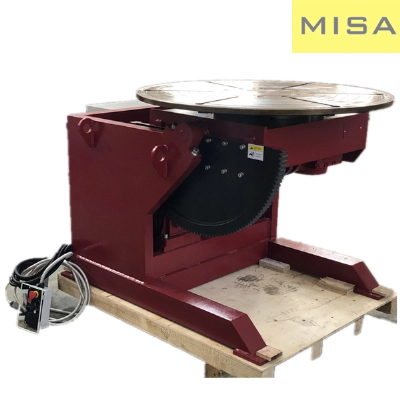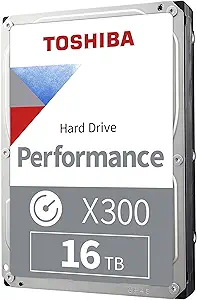Rotary Positioner for Pipe Elbow Flange Tilting and
Rotation Various applications of pipe welding positioners are
available, ranging from spooling pipes to positioning large
cumbersome components like chassis components or structural
steel. It is very beneficial to use welding positioners when
welding pipe, shafts, wheels, elbows and other fittings.Positioning
valves using pipe turning positioners is a common method for
rotating or repositioning workpieces with a large offset load, as
is the case with welding turntables.The pipe welding positioners
and welding rotating tables manufactured by MISA Welding Automation
are suitable for a wide variety of pipe handling
applications. 1. The load capacity is from 2 tons to 500
tons2. Can be tilted and rotated3. Enhance safety4. Allow both
skilled and entry-level welders to make high-quality rotary welds5.
Improve employee morale6. Use semi-automatic functioning to limit
worker fatigue and increase production speeds7. Can be matched
with the manipulator to realize automatic weldingWHAT TO KNOW ABOUT
WELDING POSITIONERS Fixed
Type Welding Positioner
Hydraulic Type Welding Positioner
Elevating Type Welding PositionerWhy Choose MISA
Welding Positioners:√ Standard match with CUL and CE√ Professional
design team√ Motor power supply is equipped with safety protection√
Perfect after-sales√ 13 months warranty. Welding
Positioners - The Comprehensive FAQ Guide Welding
positioners made by MISA are all powered variable-speed
machines that can rotate in either direction and can be controlled
remotely by various switch options. What are Welding
Positioners?To work at the correct angle and a consistent surface,
welders use welding positioners to hold a workpiece and rotate
it. With its fast rotation speed, it can support significant
weight even when bearing a lot of weight.Welding positioners are
designed to ensure that the workpiece is always in the most
advantageous welding position.
Example of what a welding
positioner looks likeWelding positioner improves the welding
outputBy eliminating waste in multiple aspects of their work,
positioners improve productivity. The purpose of welding
positioners is to ensure as much arc time as possible.In order to
move cranes, chains, grippers and other types of rigging equipment
effectively, welders often have to wait for the appropriate
positioning of the workpiece, something that may have to be done
more than once for one weldment.Positioners also make it possible
for the welder to manipulate the part more quickly.Large parts can
be positioned by one operator, eliminating the need for multiple
people to reposition the part.As a result, there is a labor savings
and employees are freed up for other tasks.
Application display of welding manipulatorWelding positioner
improves welding qualityWelding positioners produce consistently
high-quality welds, which is one of the major benefits. It is
difficult to produce quality welds when the part moves during the
welding process.If the material is securely fastened, sufficient
penetration of the weld will be possible, as well as the ability to
complete all welds without interruption.In terms of weld quality,
welding positioners solve many problems since they rotate the
workpiece at a controlled rate and speed for a continuous,
penetrating weld.Advantages of a welding positioner* Tilt and
rotate the work piece to make the welding level and ship-shaped,
such as the best position for welding.* High-quality DC motor,
smooth operation of the worktable, stepless adjustment of welding
speed, large adjustment range, and high adjustment accuracy.* It
can be fixed on a workbench or a special tool for manual welding,
or it can be used with a welding manipulator to realize automatic
welding. It can also be used for cutting, grinding, assembling,
testing and other processes.* The clamp and the workbench choose a
simple mechanical connection method with high positioning accuracy;
it is especially suitable for welding flanges, steel pipes and
other joints.* The hand control box or foot switch is used to
control the desktop rotation, which is easy to control the
rotation; easy to use and simple to operate.5 things welders need
to know about weld positionersWhen selecting, operating, and
maintaining a positioner, welders should consider these five
suggestions, regardless of the size of the weldment.- Confirm the
center of gravity (COG)It is important not only to take the
weight and size of the weldment into account when selecting a
positioning device, but also to consider how far the weldment's
center of gravity is from the device. The center of gravity
refers to the point at which the weldment balances on all axes
equally. The point at which the weldment equalizes the
pressure on each axis is the COG. The positioner is torqued more
when the distance from the device i
Related products about Rotary Welding Positioner for Pipe Elbow Flange Tilting and Rotation
-
 Waste Tyre Plastic Recycling Machinery Machine Tire Crusher Production Line Rubber Crumb Grinding Machine Equipment Tire Shredder
Waste Tyre Plastic Recycling Machinery Machine Tire Crusher Production Line Rubber Crumb Grinding Machine Equipment Tire Shredder
-
 Stretch Plastic Blowing Pet Bottle Making Blow Molding Machine Bottles Stretch Automatic Pet Bottle Blowing Machine
Stretch Plastic Blowing Pet Bottle Making Blow Molding Machine Bottles Stretch Automatic Pet Bottle Blowing Machine
-
 Waste Plastic Pet Bottle, Water Bottle Flake, PP/HDPE/LDPE PE Film Jumbo Woven Bags Plastic Crusher Machine, Plastic Crushing Washing Recycling Machine
Waste Plastic Pet Bottle, Water Bottle Flake, PP/HDPE/LDPE PE Film Jumbo Woven Bags Plastic Crusher Machine, Plastic Crushing Washing Recycling Machine
-
 Type 2 Wall-Mounted Electric Car Charging Station 7kw /11 Kwelectric Vehicle Charging Station Home Wallbox AC EV Charger Single Phase or 3three Phase
Type 2 Wall-Mounted Electric Car Charging Station 7kw /11 Kwelectric Vehicle Charging Station Home Wallbox AC EV Charger Single Phase or 3three Phase
-
 G-View G12W Wholesale Auto Car LED Headlight Bulb High Power H13 H11 9005 H7 H4 Car LED Headlights LED Car Lights
G-View G12W Wholesale Auto Car LED Headlight Bulb High Power H13 H11 9005 H7 H4 Car LED Headlights LED Car Lights
-
 New Design Porcelain Round Plates Dinner Set for Wedding and Banquet
New Design Porcelain Round Plates Dinner Set for Wedding and Banquet
-
 China 2023 New Design Super Soft 100% Polyester Microfiber Knitted Oversized Decoration Hoodie Blanket
China 2023 New Design Super Soft 100% Polyester Microfiber Knitted Oversized Decoration Hoodie Blanket
-
 Handmade Art Creative Materials Thickened White Paper Cup DIY Disposable Handmade Colored Paper Cup
Handmade Art Creative Materials Thickened White Paper Cup DIY Disposable Handmade Colored Paper Cup






